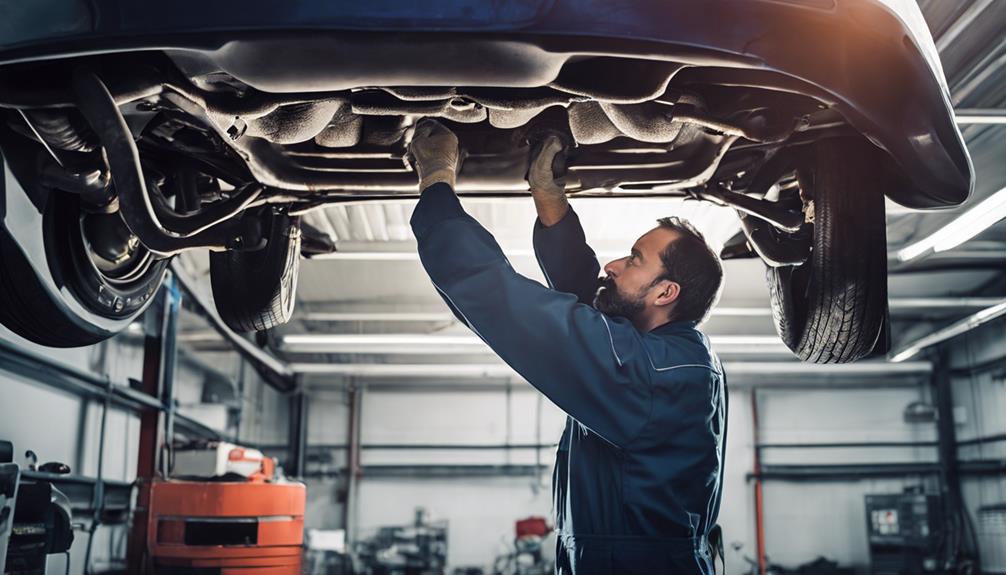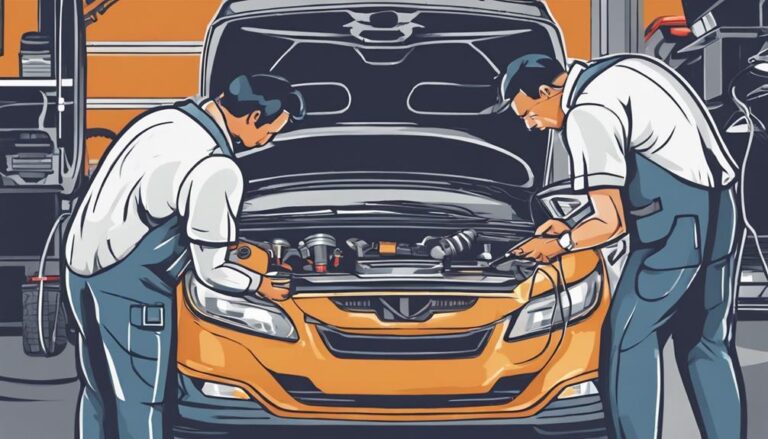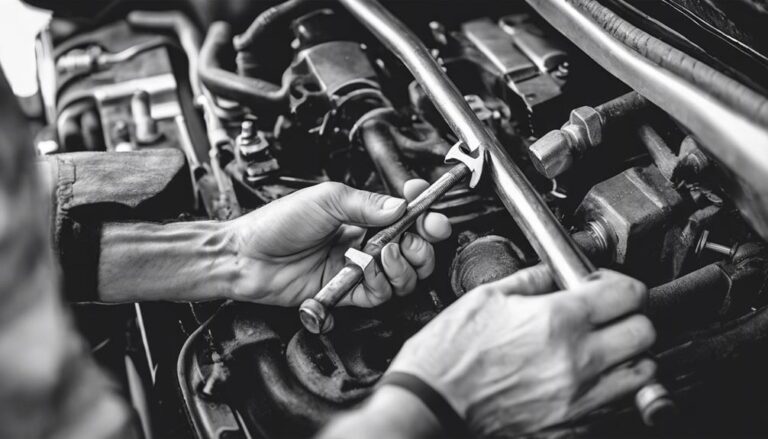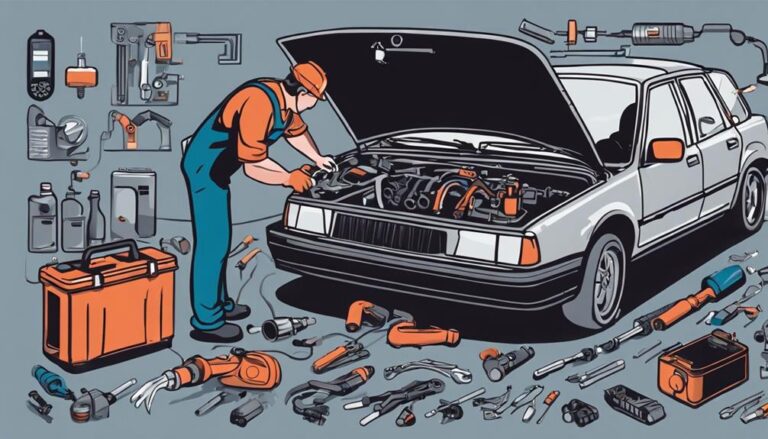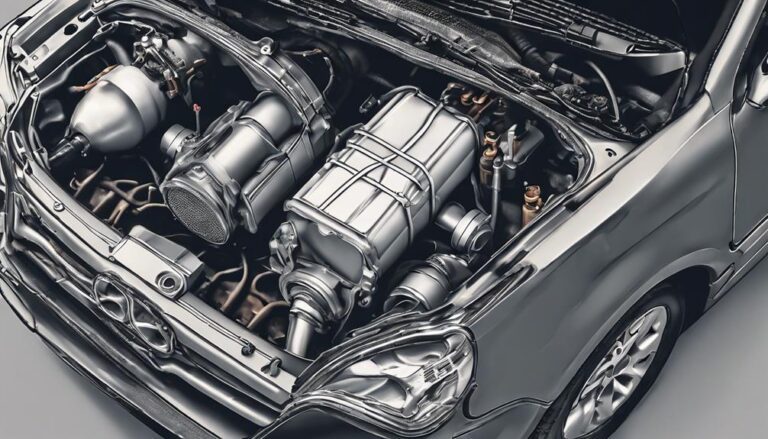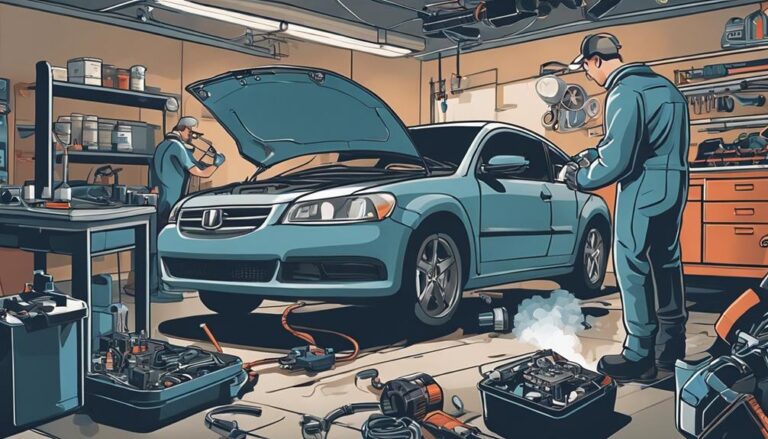3 Best Practices for Emission System Maintenance
Are you aware of the top three best practices for emission system maintenance that can greatly impact your vehicle's efficiency and emissions output?
Implementing these practices not only guarantees peak performance but also contributes to a cleaner environment.
Stay tuned to discover how a few simple steps can make a substantial difference in your vehicle's eco-friendly footprint and overall health.
Key Takeaways
- Regular maintenance reduces harmful emissions and optimizes fuel efficiency.
- Proactive checks prevent costly repairs and maintain engine efficiency.
- Cleaning EGR valves prevents carbon buildup, enhancing performance.
- Ensuring oxygen sensor and catalytic converter health maximizes emissions reduction.
Importance of Regular Emission System Maintenance
Regularly maintaining your vehicle's emission system is important for minimizing harmful pollutants released into the environment. Proper maintenance not only reduces emissions but also plays a vital role in optimizing fuel efficiency. By conducting scheduled maintenance checks every 12,000 miles, you can proactively identify and address any potential issues within the emission system before they escalate. Neglecting this maintenance can result in costly repairs and a decrease in engine efficiency over time.
When you prioritize the maintenance of your emission system, you contribute to a cleaner environment by reducing the release of harmful pollutants. A well-maintained emission system not only benefits the environment but also guarantees that your vehicle operates at its best, achieving maximum fuel efficiency. By adhering to a regular maintenance schedule and addressing any concerns promptly, you not only protect the environment but also prolong the lifespan of your vehicle while maximizing its performance.
Key Practices for Emission System Care
To guarantee peak performance and decrease harmful emissions from your vehicle, implementing key practices for emission system care is essential. Follow these key practices for emission system care:
- Regularly Inspect Oxygen Sensors: Oxygen sensors play a vital role in monitoring the air-fuel mixture. By inspecting them regularly, you can improve fuel efficiency by up to 40%, leading to reduced fuel consumption and lower emissions.
- Maintain Catalytic Converter: A well-maintained catalytic converter can reduce harmful emissions by up to 90%. Make sure it's functioning at its best to maximize emissions reduction and engine efficiency.
- Clean the EGR Valve: Regularly cleaning the Exhaust Gas Recirculation (EGR) valve can prevent up to 50% of carbon buildup. This maintenance practice not only reduces emissions but also contributes to improved engine performance through proper maintenance.
Optimal Maintenance Techniques for Emission Systems
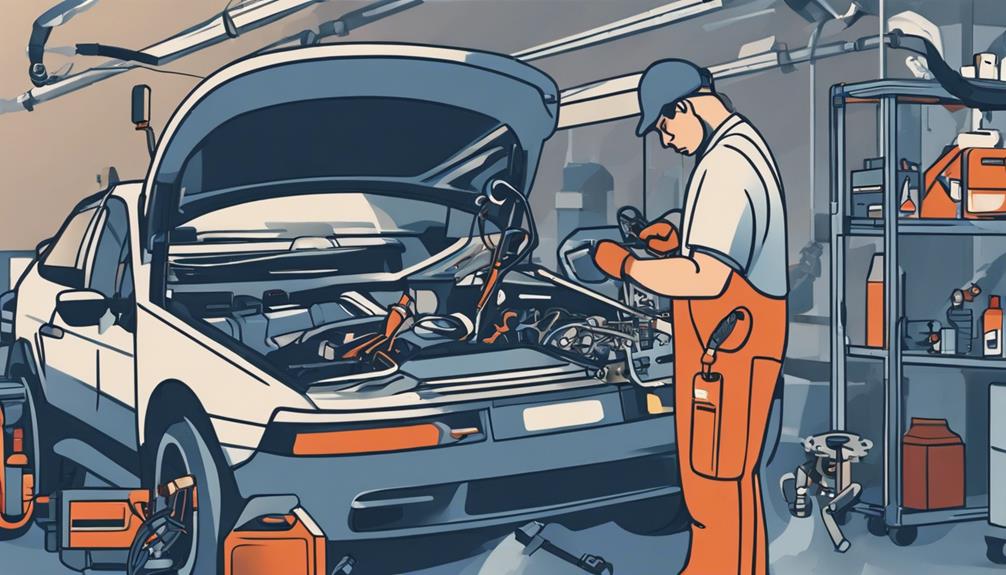
Inspecting and maintaining various components of your vehicle's emission system is imperative for peak performance and reduced harmful emissions. To optimize your emission system's efficiency and reduce air emissions, focus on key maintenance techniques.
Regularly replacing oxygen sensors is essential, as it can improve fuel efficiency by up to 40%. A well-maintained catalytic converter plays a significant role in reducing harmful emissions by up to 90%. Ensuring clean EGR valves can lower nitrogen oxide emissions by up to 70%.
Proper maintenance of the emission system not only enhances performance but can also prevent up to 50% of vehicle issues. Neglecting proper maintenance may lead to up to 20% higher emissions output. By adhering to these best maintenance practices, you can contribute to a cleaner environment, improve fuel economy, and prolong the lifespan of your vehicle.
Frequently Asked Questions
What Is Emission Maintenance?
Understanding emission maintenance involves grasping the requirements for emission testing and implementing preventative measures. Neglecting these tasks can harm the environment and impact vehicle performance. Regular care guarantees efficient functioning of components like the catalytic converter and oxygen sensors.
How Do You Fix Emission System Problems?
When fixing emission system problems, you first need to conduct thorough troubleshooting. Utilize OBD diagnostics to pinpoint issues accurately. Consider catalytic converter replacement if necessary. Trust a skilled technician for efficient repairs to maintain vehicle performance and compliance.
How Can I Reduce Carbon Monoxide Emissions in My Car?
To reduce carbon monoxide emissions in your car, focus on fuel efficiency, engine tuning, and fixing exhaust leaks. Regular maintenance, quality fuel, and driving habits impact emissions. Keep filters clean and drive smoothly.
What Is the Emission Control System and Regulations?
To understand emission control systems and regulations, consider this: "Clean air is everyone's right." Government regulations set emission standards to curb vehicle emissions, protecting the environment and public health through strict control and regular vehicle inspections.
Conclusion
To sum up, maintaining your vehicle's emission system is like giving it a gust of fresh air. By following the best practices outlined, you can guarantee your engine runs smoothly and efficiently, while also doing your part to reduce harmful emissions.
Remember, a well-maintained emission system is the key to unleashing peak performance and a cleaner environment. So, don't forget to schedule those regular check-ups and take care of those vital components for a greener, more efficient ride.

